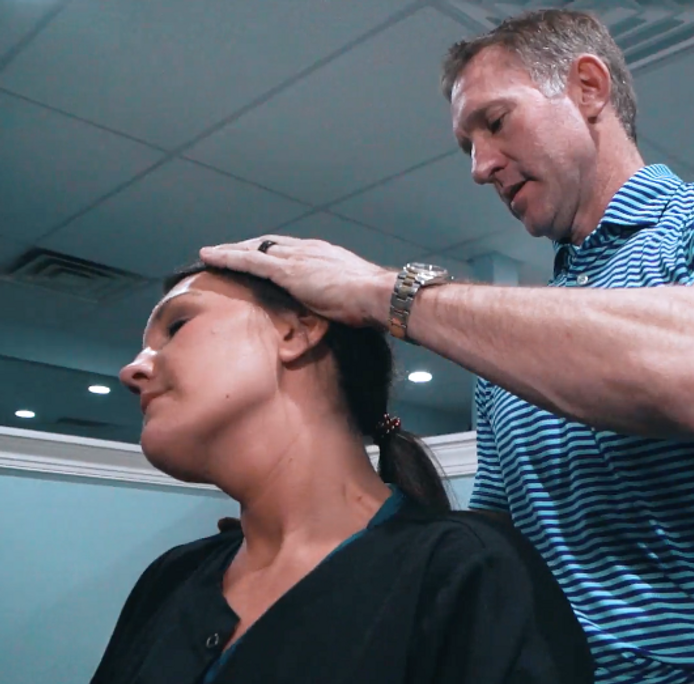BEST CHIROPRACTOR IN NORTH CAROLINA
Pediatrics
(Birth-Teenagers)
Name one thing more important in your life than your children! Literally impossible. Remember the joy your new child brought into your life. Grandparents within our communities are jumping at the announcement of the big day. Please understand that our team recognizes how important a new, healthy child is to your family.

Every time that your children are evaluated and adjusted for subluxation you are affecting the nervous system and the brain. The first year of life is the most important time in your child’s life as the nervous system will literally double in size. The spinal cord finishes growing at the age of 4, while the vertebral column finishes growing at age 14-18. Our Chiropractic Team believes that routine, consistent chiropractic care should begin at birth. We have had unbelievable success with our new families and their children. Chiropractic care is beneficial for all ages, including babies, toddlers, children, and teenagers. That's why chiropractic care is a great gift to give your child or grandchildren for better health.

Why babies?

An estimated one in three births is considered to be traumatic, and the lasting effects can be both physical and psychological. As well as causing physical injuries, birth trauma can cause postpartum anxiety, difficulty bonding with your baby, and even postpartum, post-traumatic stress disorder.
The process of birth is very demanding and quite a traumatic experience for an infant. During the process of labor and delivery, a tremendous amount of stress is placed on the spine of a newborn. Consequently, the bones of the spine have great potential to misalign, resulting in subluxation. Some common manifestations of subluxation are localized pain, recurrent infections, and difficulty nursing or digesting food. Gentle, specific chiropractic adjustments may help to prevent these problems and allow the nervous system to function at optimal potential.
To learn more about the benefits of pediatric chiropractic, explore the International Chiropractic Pediatric Association website.
These top 10 conditions account for 70% of the reasons kids seek chiropractic care.
-
Optimal health and development
-
Ear infections
-
Neck pain
-
Headaches
-
Upper respiratory infection
-
Low back pain
-
Allergies
-
Asthma
-
Bed-wetting
-
Constipation
Kids are constantly exposed to the risk of injury or subluxation from everyday activities like falling, bad posture, accidents, or carrying heavy backpacks that can distort their spine alignment. At our Wilmington, Wallace, and Clinton offices, our team of chiropractors specializes in family, pediatric, and prenatal chiropractic care. Our experienced doctors have helped numerous families, including kids and expecting mothers, live a healthier, pain-free life.
Research and Results
The Quality of Life of Children Under Chiropractic Care Using PROMIS-25: Results from a Practice-Based Research Network. Alcantara J, Lamont AE, Ohm J, Alcantara J. J Altern Complement Med. 2017 Dec 20, doi: 10.1089/acm.2017.0141
Alcantara Joel, Alcantara Joey D., Alcantara Junjoe. The Chiropractic Care of Infants with Breastfeeding Difficulties. Explore DOI: 10.1016/j.explore. 2015.08.005.
Boone, Oswald, Holt et al. (2006). Physical, physiological, and immune status changes coupled with self- perceptions of health and quality of life in subjects receiving chiropractic care. Journal of Subluxation Research
Fallon, J. M. (1997). Otitis media study. Journal of Chiropractic Pediatrics, 2(2), 167-183
Geisen, J. M. et al. (1989). Evaluation of chiropractic manipulation as a treatment of hyperactivity in children. Journal of Manipulative Physio-Therapeutics, 12(5), 353-363. Medline ID: 90111454.
Childhood falls. Journal of the Australian Chiropractor, 18-21. Jesper, M. et al. (1999).
Short-term effect of spinal manipulation in the treatment of infantile colic. Journal of Manipulative Physio-Therapeutics, 22, 517-522. Pauc, R. & Young, A. (2006).
*Research indicates that 11.9% of infants have upper cervical subluxations as a result of in-utero constraint; prolonged labor; difficult delivery; and inadequate head support. (Biederman, 1992)
Other studies suggest that 89% of infants with sleeping, feeding, or digestive disturbances are experiencing subluxations of the spine. (Siefert, 1975)


_edited.png)











